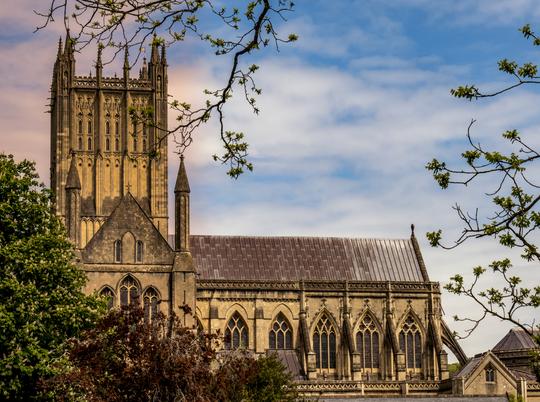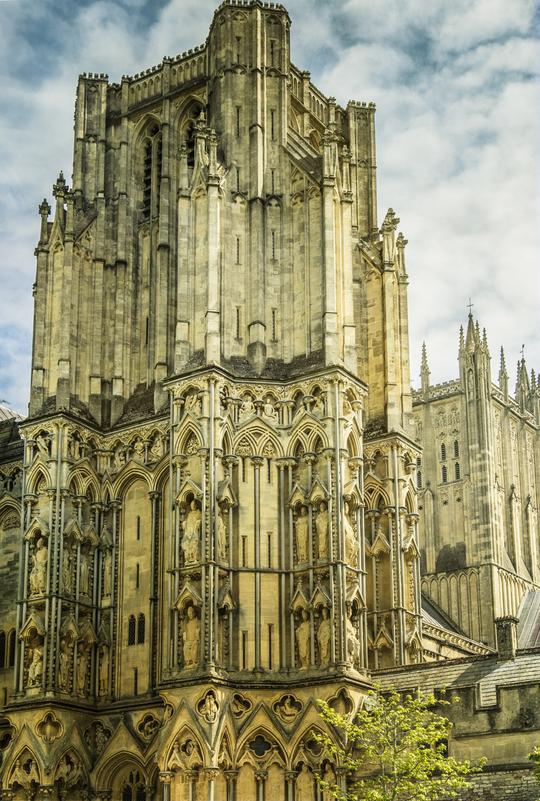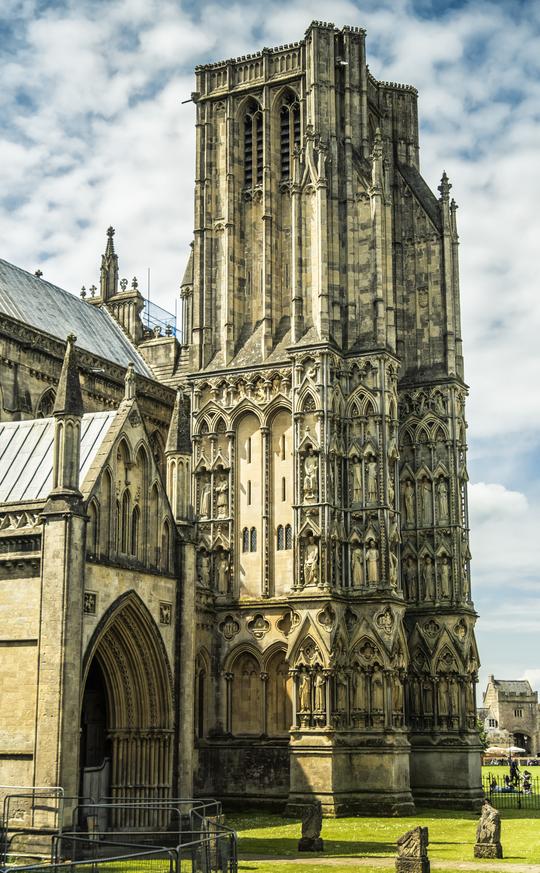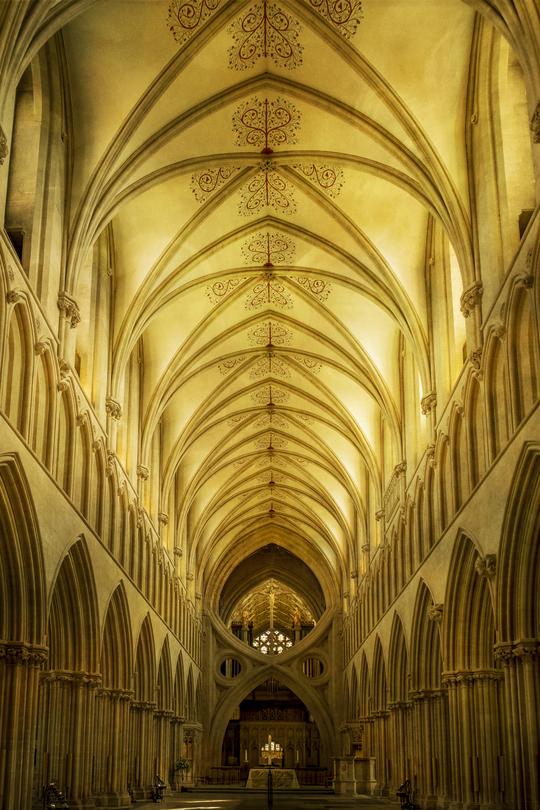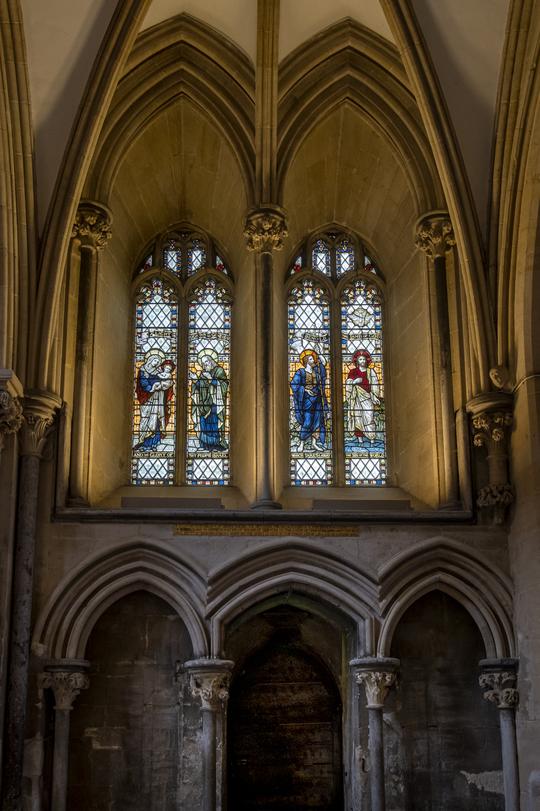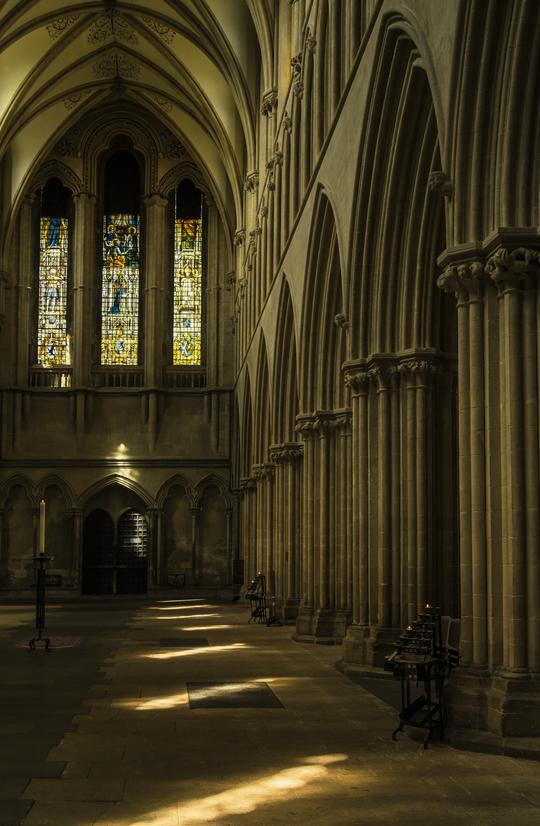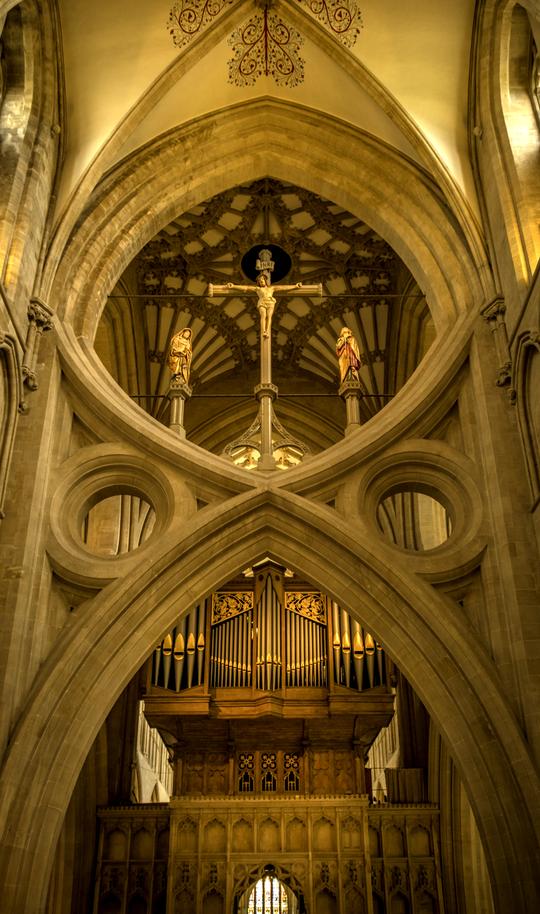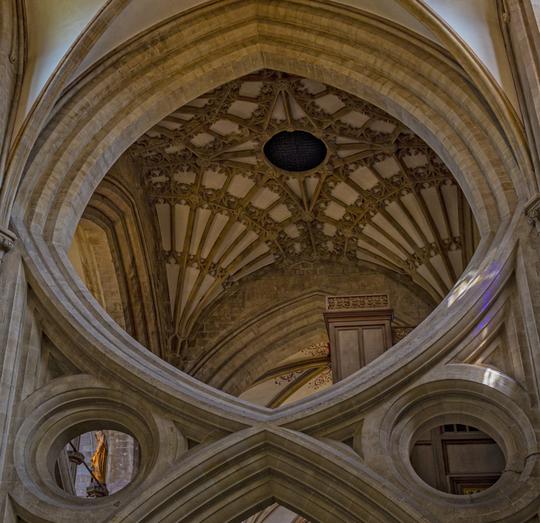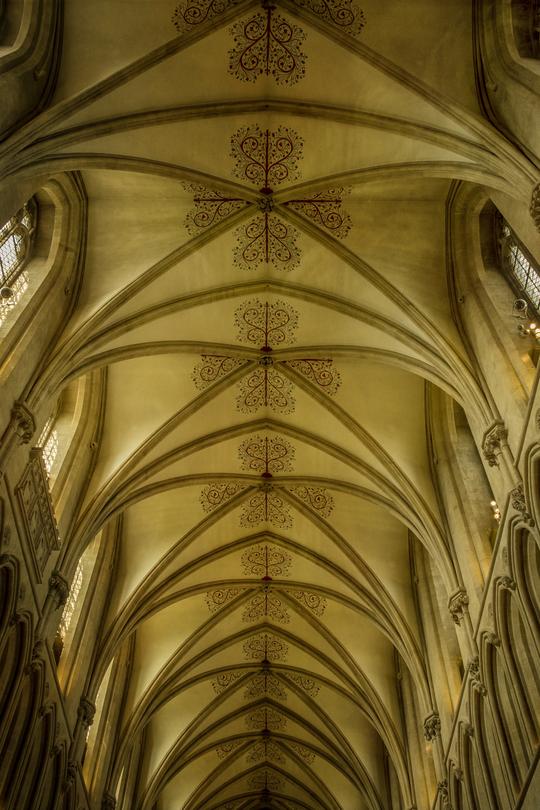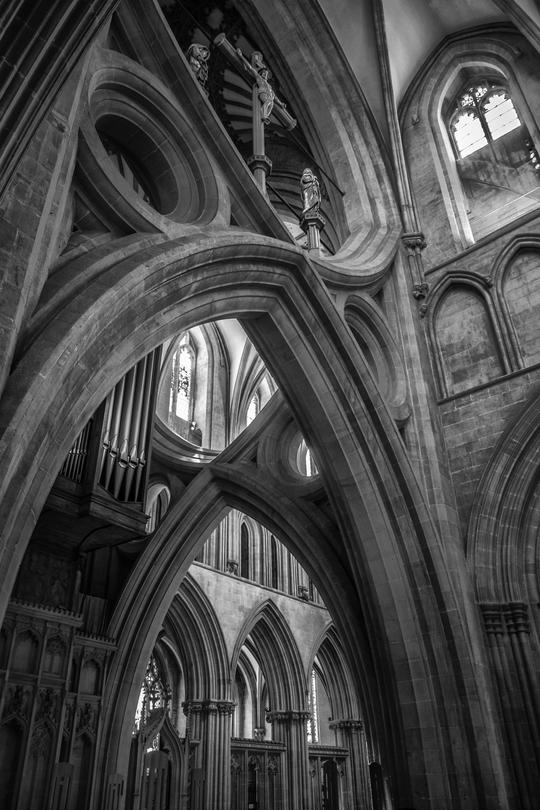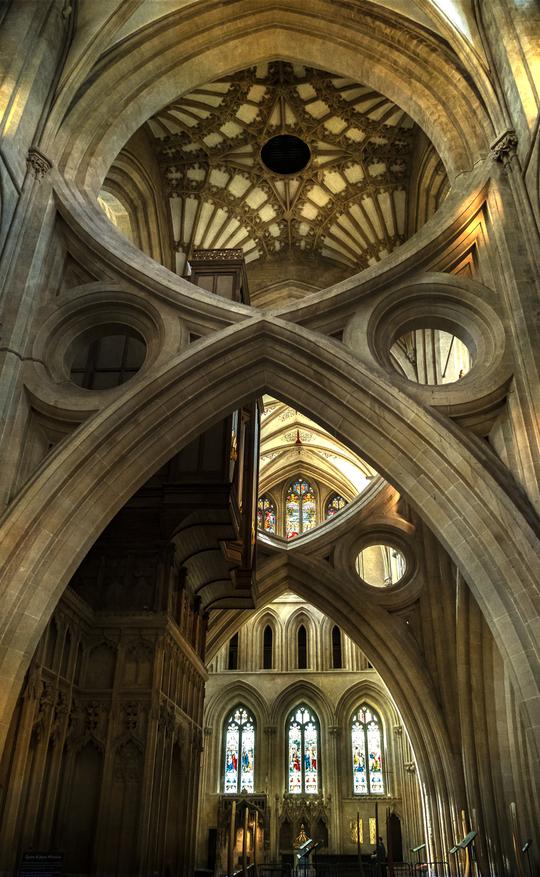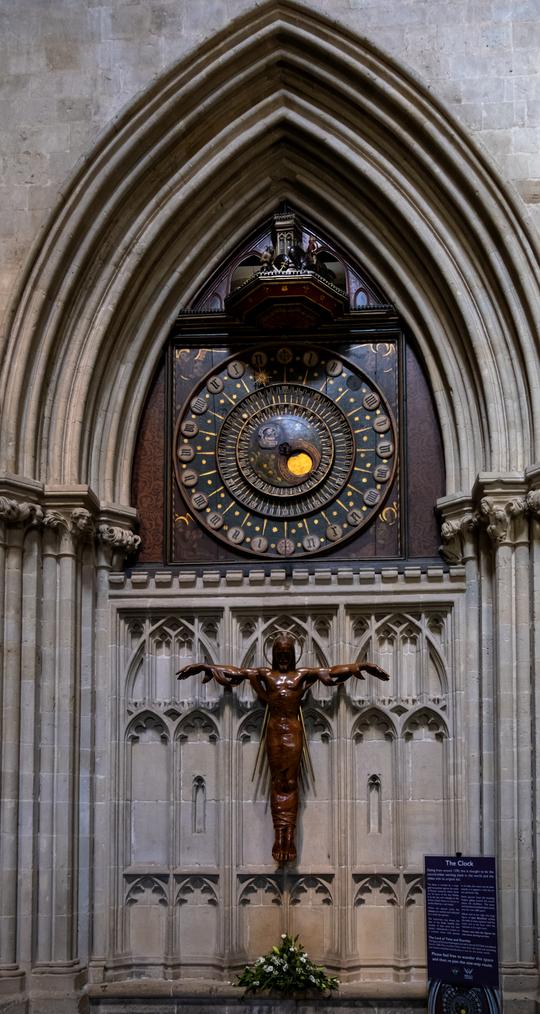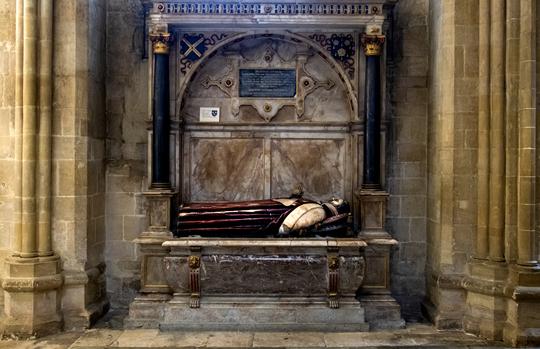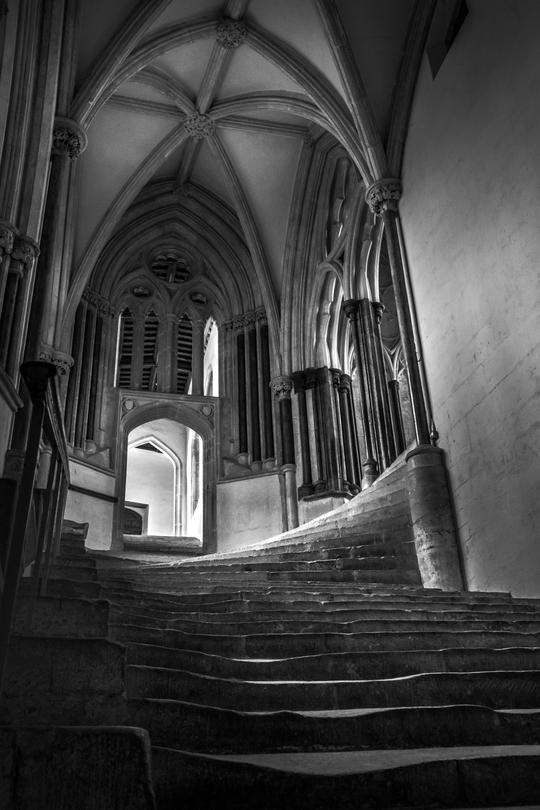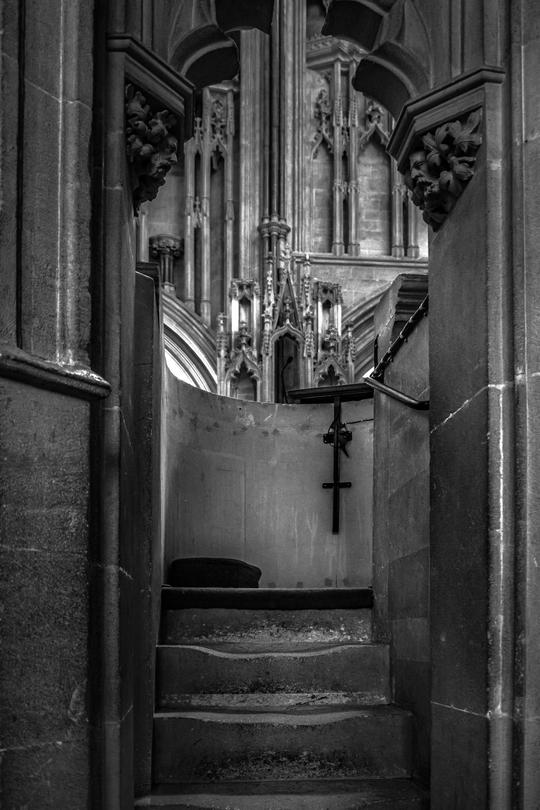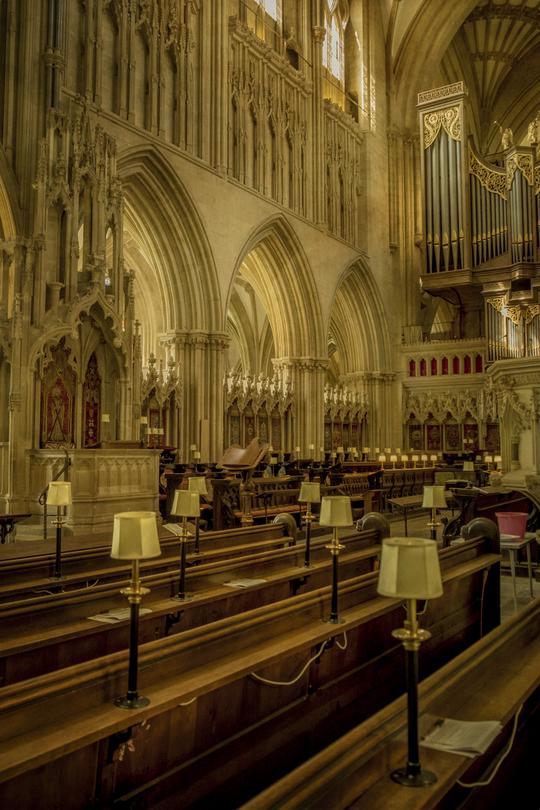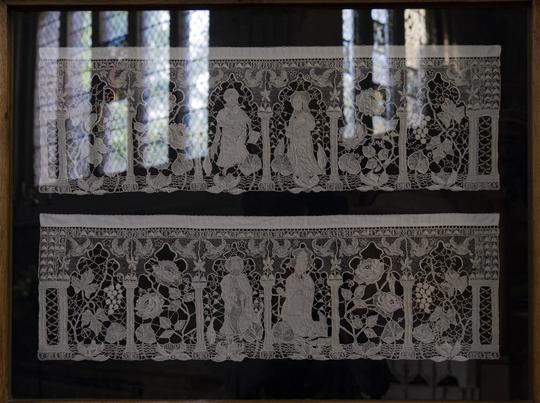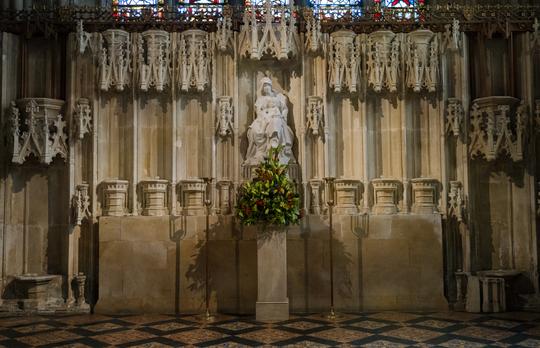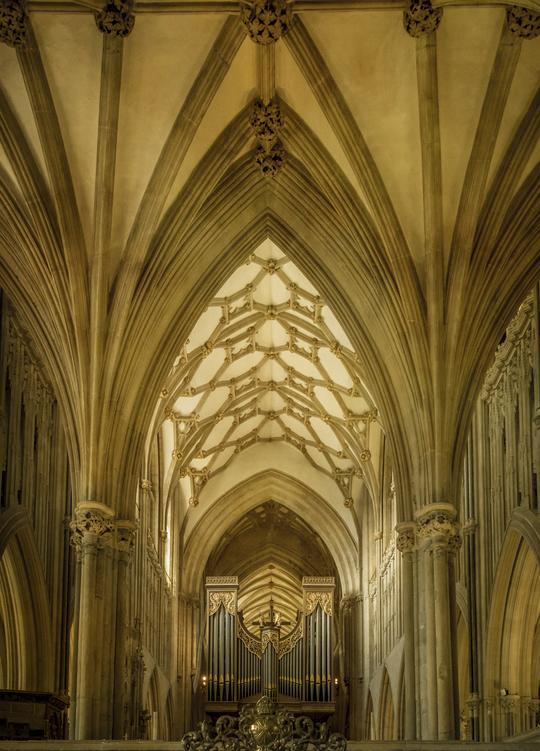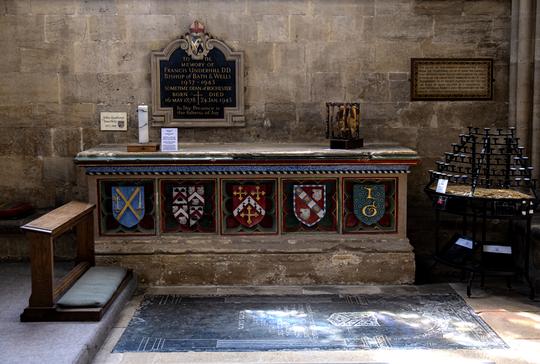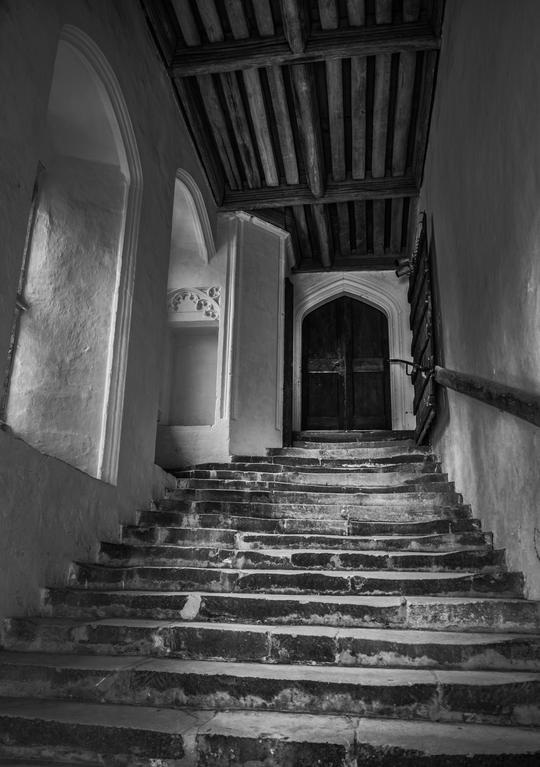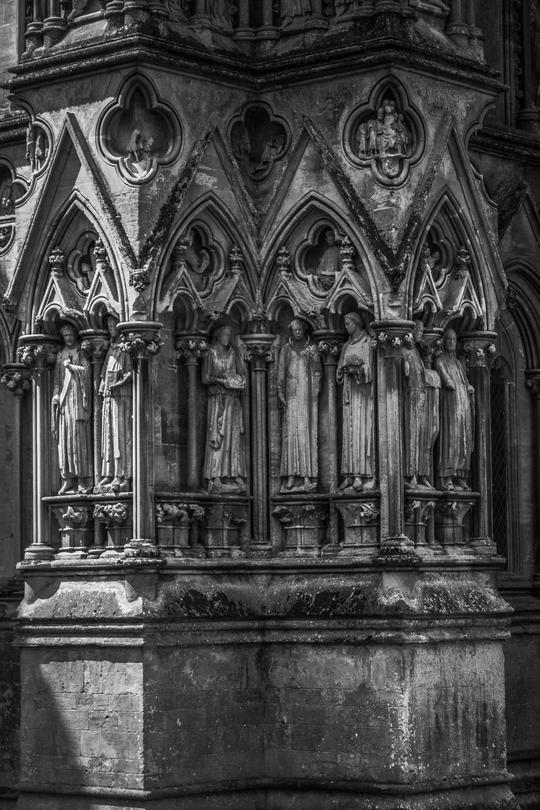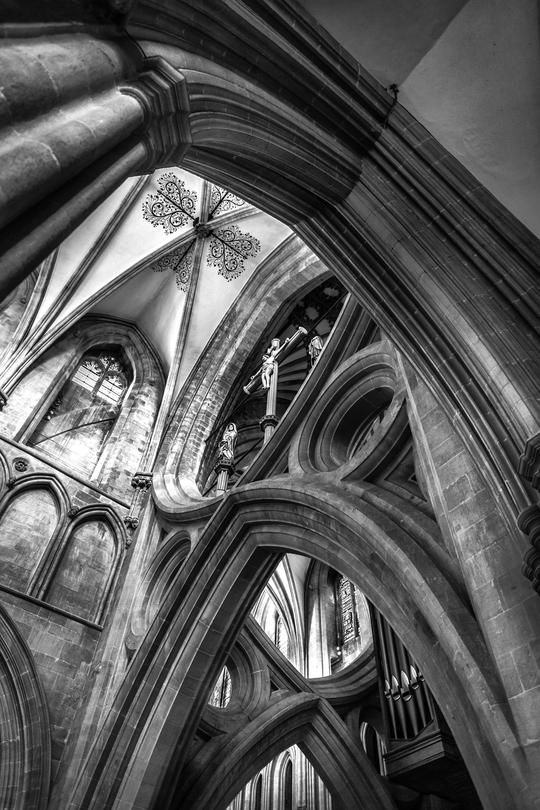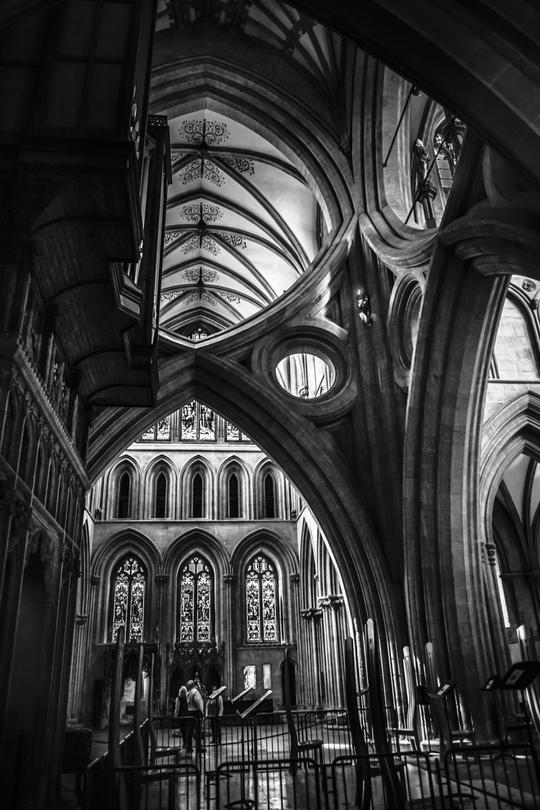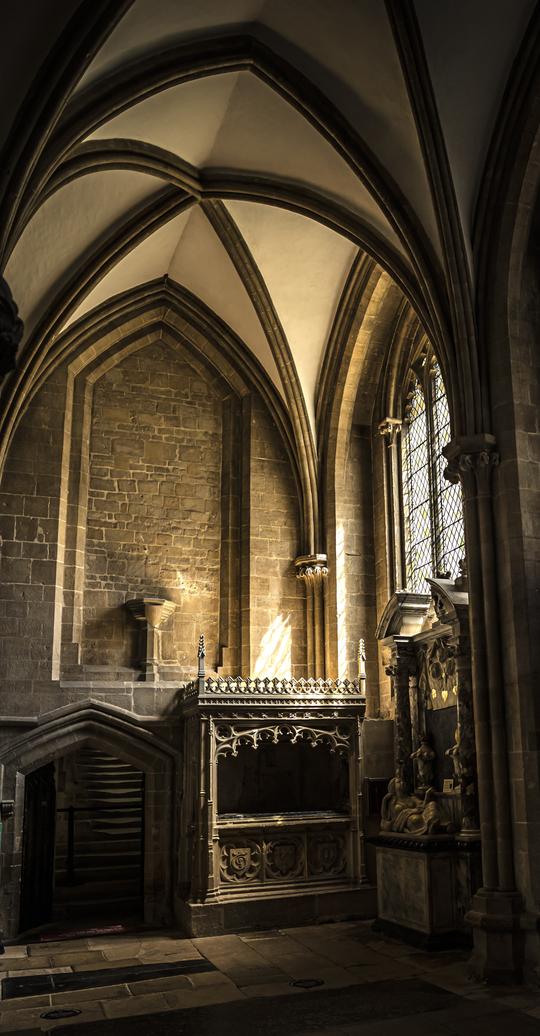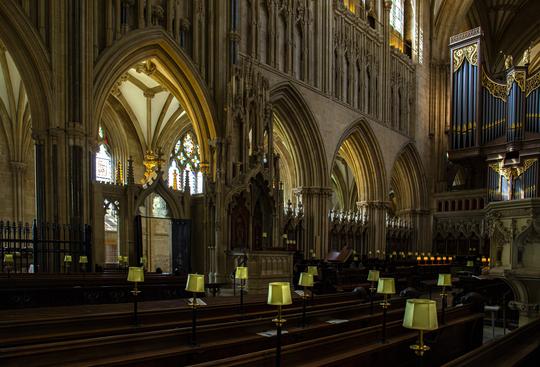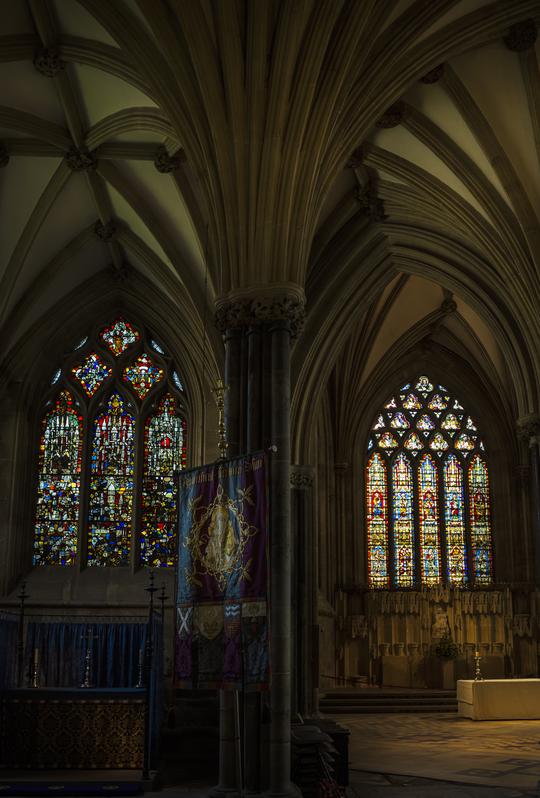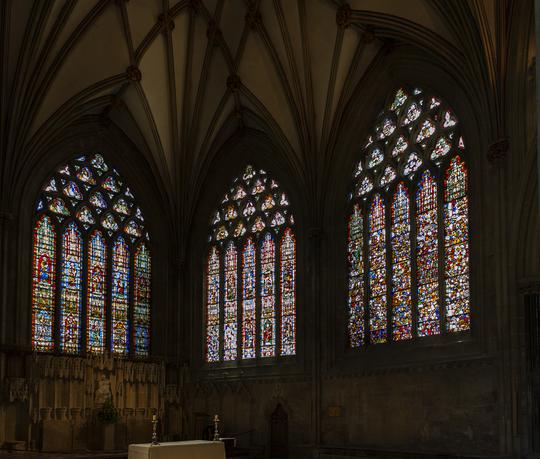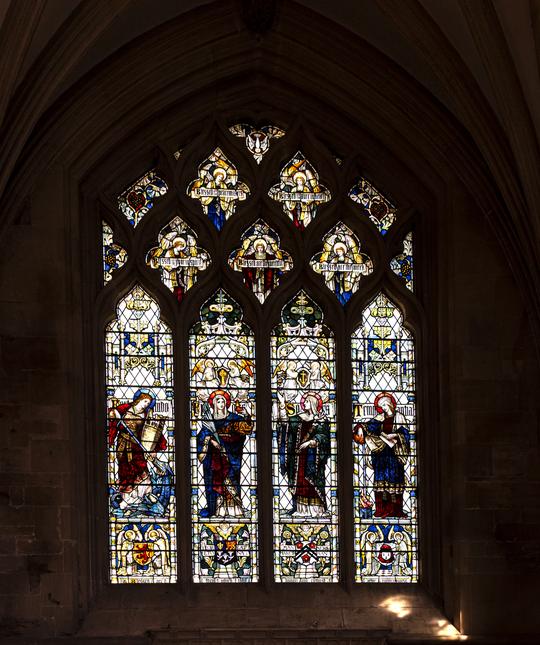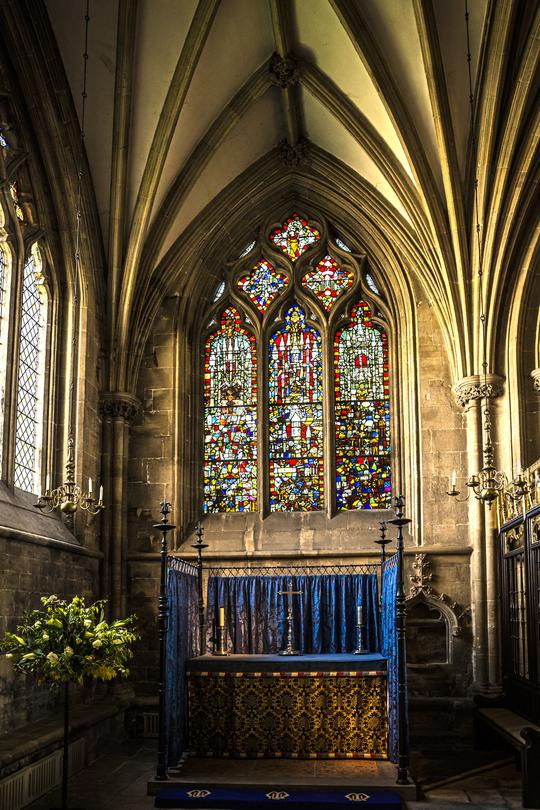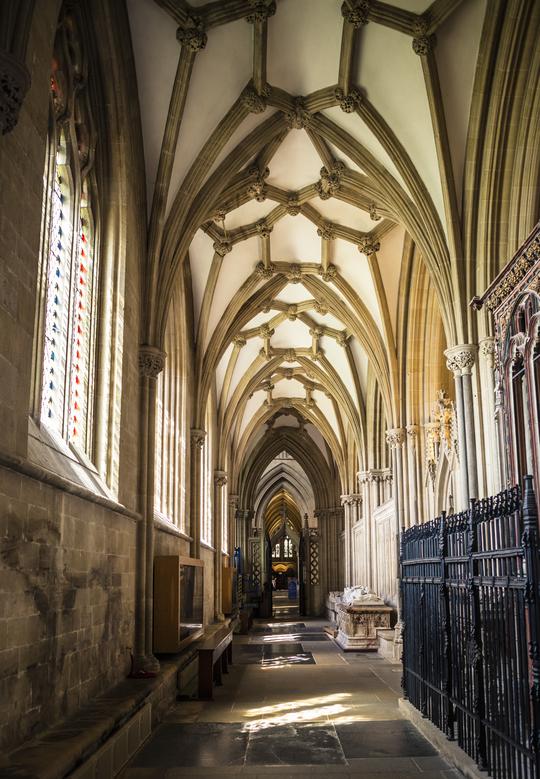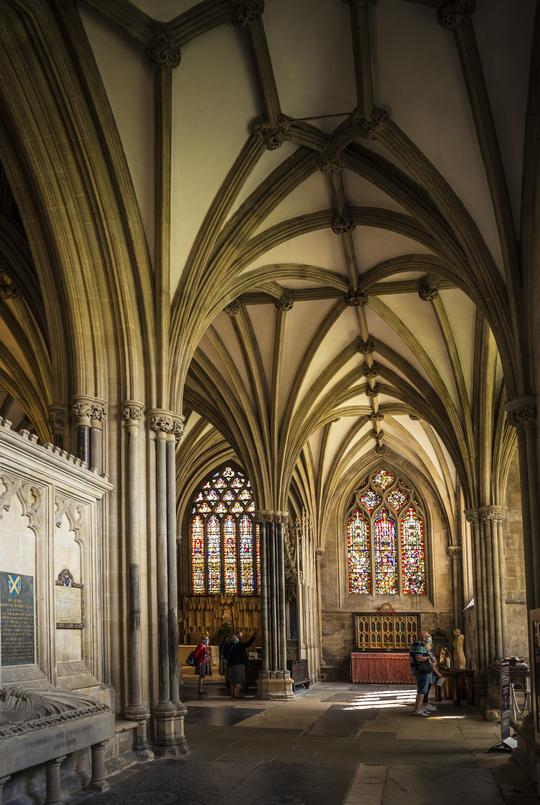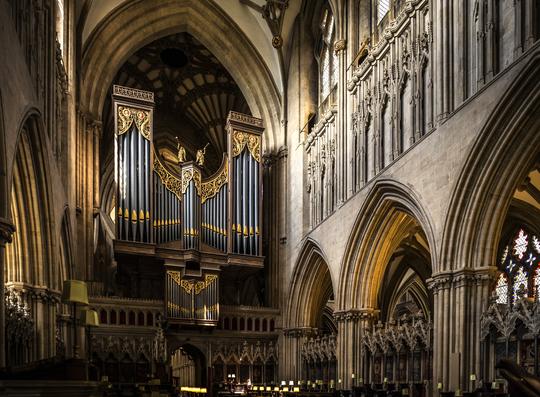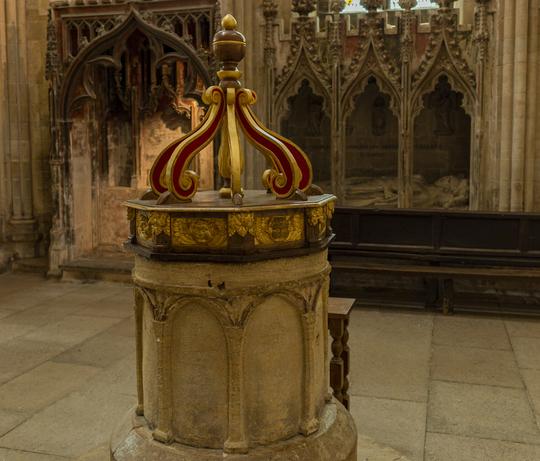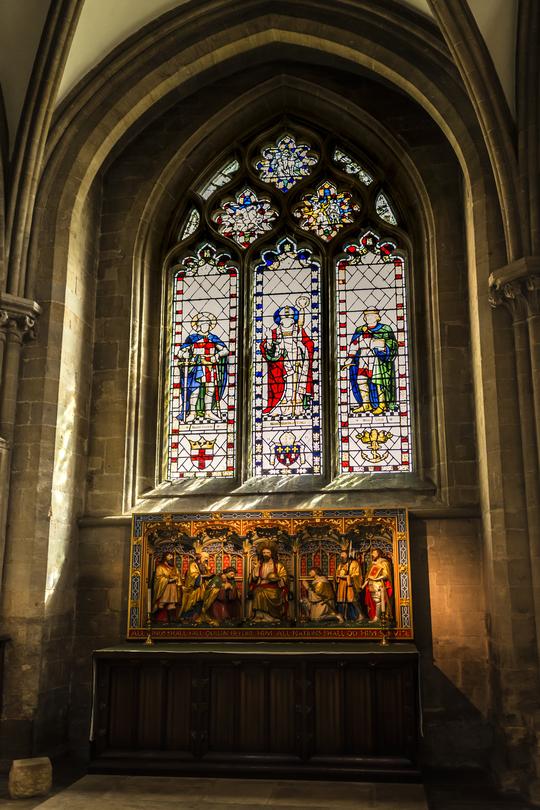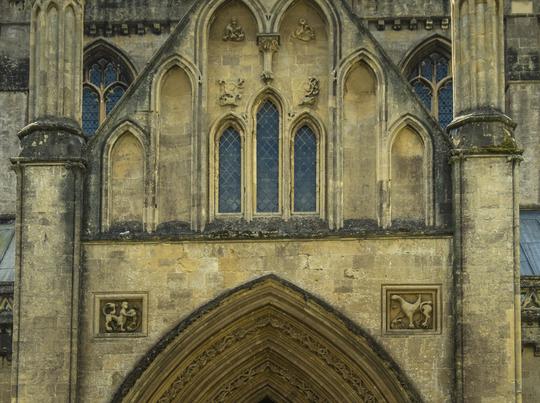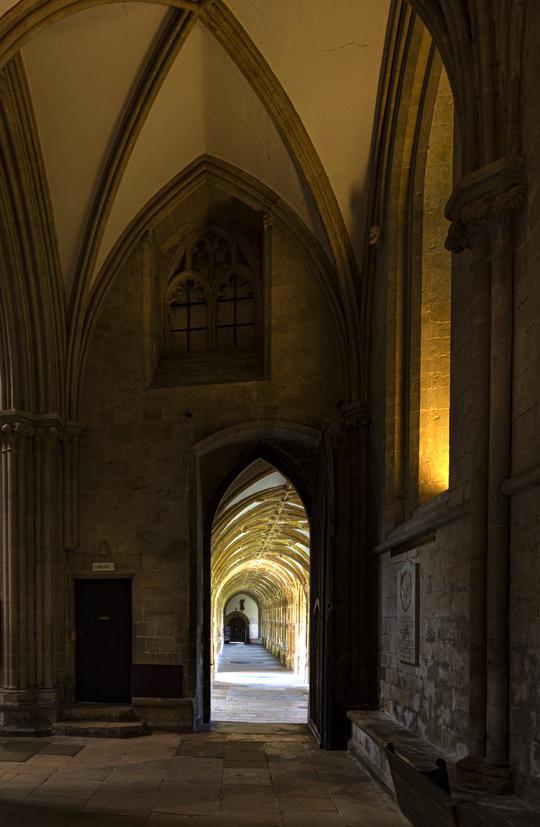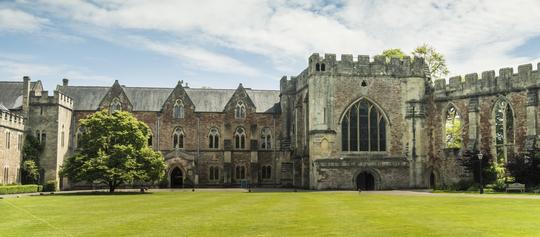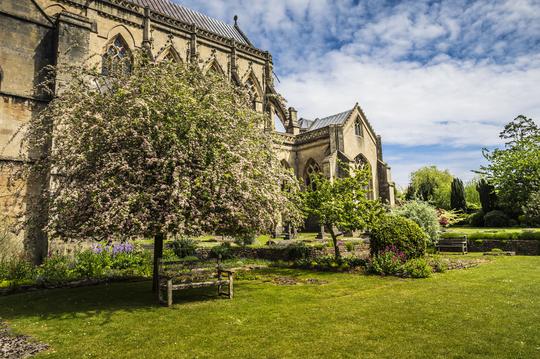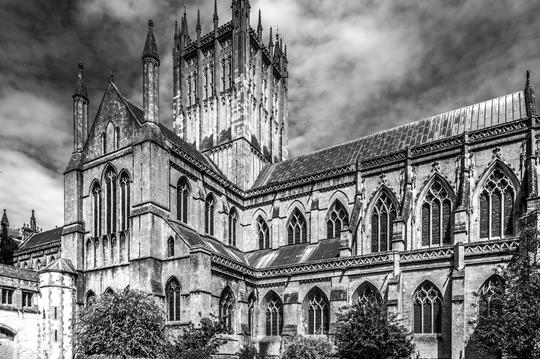Wells Cathedral
Wells Cathedral was built in 1176–1450 to replace an earlier church on the site since 705, it is moderately sized for an English cathedral. Its broad west front and large central tower are dominant features. It has been called "unquestionably one of the most beautiful" and "most poetic" of English cathedrals. Building began about 1175 at the east end with the choir. Historian John Harvey sees it as Europe's first truly Gothic structure, breaking the last constraints of Romanesque. Its Early English front with 300 sculpted figures, is seen as a "supreme triumph of the combined plastic arts in England". The east end retains much ancient stained glass. Unlike many cathedrals of monastic foundation, Wells has many surviving secular buildings linked to its chapter of secular canons, including the Bishop's Palace and the 15th-century residential Vicars' Close. It is a Grade I listed building. Wells is the first cathedral in England to be built, from its foundation, in Gothic style. According to art historian John Harvey, it is the first truly Gothic cathedral in the world, its architects having entirely dispensed with all features that bound the contemporary east end of Canterbury Cathedral and the earlier buildings of France, such as the east end of the Abbey of Saint Denis, to the Romanesque. Unlike these churches, Wells has clustered piers rather than columns and has a gallery of identical pointed arches rather than the typically Romanesque form of paired openings. The style, with its simple lancet arches without tracery and convoluted mouldings, is known as Early English Gothic.
